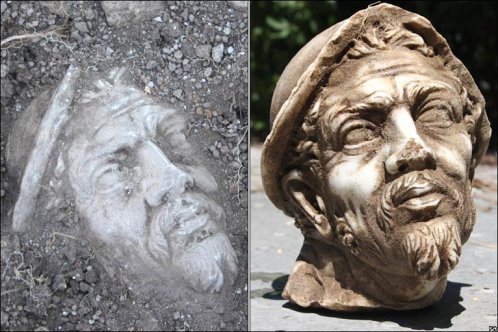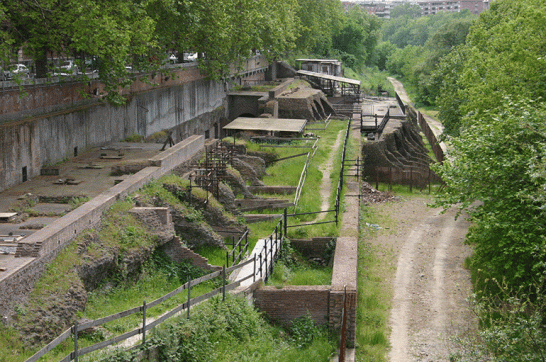The instructors for the Portus MOOC asked us to consider a museum we would make with artifacts from Portus and what we’d include. I decided to do a pictorial blog! (Links to all images and information will be placed at the end of the blog) 
The Portus Head, discovered by Dr. Simon Keay
The first artifact I would include would be the Portus Head. it is assumed that it represents a fisherman, which makes sense considering the importance of the sea to the Port and its inhabitants. It is a lovely representation of the Port, finely detailed and belongs in any collection associated with Portus.


Examples of amphorae would be extremely important, both because of the reliance on amphorae to trade within the Empire and because of the vast amount of sherds and vessels found at the site of Portus.

Relationship of Portus to Ostia.


I would also include various maps and pictures to explain the relationship of the port in Ancient Rome, what’s there today, maps, etc.




Coins would also play a large part in my museum. Not only do they offer a view into coinage itself, they remain important in terms of what Portus was for. As a huge complex dedicated to trade, money played an important part of life in Portus. Additionally, coins give us insight into the politics, religion, and technology in relation to the site.

Brick stamps would be necessary to include as they give us important information regarding standards and practices both within Rome and Portus.
Also important would be to include much of the CGI work so that the museum patrons would be able to see a computer image of some of the ruins.




Mosaics and reconstructions give people an idea of the artistry and lifestyle of Portus and Rome.


As well as friezes.
The history of the Emperors associated with Rome and Portus would also be essential.

Trajan’s Column
Trajan, Marcus Ulpius Nerva Traianus Augustus: 98 – 117

Bust of Emperor Hadrian. Born: January 24, 76 AD, Italica, Spain Died: July 10, 138 AD

Emperor Claudius, Reign- 24 January 41 – 13 October 54 (13 years)
I would also offer some hands on (if this were not on the net) displays for kids and adults. We could wash pottery sherds, have a “dig” with organic materials and a “skeleton”, coloring activities, and access to online activities through a computer lab.
http://www.southampton.ac.uk/promotion/portus.html
http://www.ahrc.ac.uk/News-and-Events/Image-Gallery/Pages/Portus-Project.aspx
http://www.ostia-antica.org/portus/claudius.htm
http://garethharney.wordpress.com/
http://benedante.blogspot.com/2011/11/roman-portus.html
http://www.portusproject.org/technology/2012/12/reconstructing-portus/
http://www.ostia-antica.org/portus/c008.htm
http://www.ostia-antica.org/portus/reliefs.htm
http://www.ostia-antica.org/portus/portus.htm
http://www.ahrc.ac.uk/News-and-Events/Image-Gallery/Pages/Portus-Project.aspx
http://www.romanobritain.org/3_bio/bio_trajan.htm#.U7BrAPldUeU



As a fellow MOOC student, I just want to say that yours is one of the best responses to the advanced activity that I’ve seen
Thank you! I loved doing it.